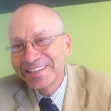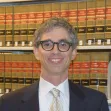Walkability
Architect/Planner-Turned-Councilman Offers Thoughts on City's Future
An architect takes a seat on the Wet Hollywood City Council, and offers his thoughts on density and parking in the city and where things went wrong.
Walkability Makes Housing More Expensive
A new study shows that improving streets with widened sidewalks, better lighting and other walkability measures can increase the nearby home value as much as $50,000.
The False Debate Between Cities and Suburbs
The debate over urbanism often pits suburbs against urban areas. But the real debate is about walkable areas versus car-dependent ones, according to Christopher Leinberger.
Combating Gas Prices with Transit and Urban Design
As gas prices rise, more voices are calling for increased investments in transit and more multi-modal city planning.
Overlaying Form-Based Zoning
Columbus, Ohio has been experimenting with zoning overlays, which do not change the underlying land use regulations but add a set of form-based regulations focused on livability.
Livability Lessons from Gainesville
Urban designer David Green talks with Anthony Lyons, Director of the city of Gainesville's Community Redevelopment Agency, about his successes in the city and how other cities can become more livable.
The Cup-of-Coffee Test
What makes effective transit-oriented development? Transportation planner Alan Huynh makes a good argument for the proximity to a cup of coffee as a defining characteristic of quality TOD.
Seeking an Example of Sustainable Urbanism in Seattle
Seattle has the political momentum behind sustainable urbanism, but it doesn't seem to have a physical neighborhood example of how sustainable urbanism can work, according to this article.
The Social Benefits of Walkability
People who live in walkable neighborhoods watch less TV, participate in more local organizations, and trust their neighbors more according to a new report from the University of New Hampshire.
The Head of New York's Streets Revolution
Grist's Sarah Goodyear talks with New York City Transportation Commissioner Janette Sadik-Khan about her work in the city -- and what other cities can learn from it.
The Walkable City of Death
San Francisco, one of the nation's most walkable cities, has one of the country's highest rates of pedestrian deaths.
Smart Growth's Future in Northern Virginia
In an interview with Arlington County Board Vice-Chairman Christopher Zimmerman, Jonna McKone asks the local official about current and future transit-oriented development (TOD) and managed growth in the Washington, D.C. region.
Walkable Cities, Walkable Neighborhoods
New neighborhood-level data from the walkability rating website Walk Score has broadened the view of what it means to live in a walkable city.
A Look at the World's Most Walkable Cities
NRDC's Kaid Benfield offers a photographic look at the 10 most walkable cities in the world, as chosen by Frommer's.
The Not-Quite-20-Minute Neighborhood
Portland wants to create a series of "20-minute neighborhoods" -- places where people can walk, within 20 minutes, to most of the places they need to go and the services they need. Some neighborhoods are already there, but others have a ways to go.
Parks, Walkability and the Role They Play in Obesity
St. Louis' Forest Park is a model of good planning, but inner-city parks are in much worse shape and having an effect on the health of those communities, says a new study.
Recovering the Real Estate Market By Shifting Development Patterns
The real estate market will only recover once developers start building the types of neighborhoods and places people are demanding, according to Patrick C. Doherty and Christopher B. Leinberger.
The Web of Walkability
Steve Mouzon visually documents his walkable day-to-day life, and all the places he can get to regularly on foot from his house.
How could Ventura transform?
A short documentary exploring the development challenges that the City of Ventura faces.
Masdar Highlights Policy Shift Away From Autopia
Robert Wright describes the policy shift already underway in planning for cities of the future. He reports that "as energy becomes more expensive, cities will have to be much more compact, easier to navigate by bike and on foot."
Pagination
Urban Design for Planners 1: Software Tools
This six-course series explores essential urban design concepts using open source software and equips planners with the tools they need to participate fully in the urban design process.
Planning for Universal Design
Learn the tools for implementing Universal Design in planning regulations.
EMC Planning Group, Inc.
Planetizen
Planetizen
Mpact (formerly Rail~Volution)
Great Falls Development Authority, Inc.
HUDs Office of Policy Development and Research
NYU Wagner Graduate School of Public Service


































